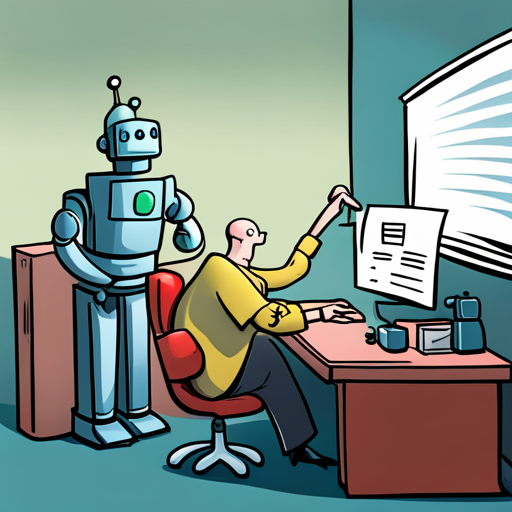[Written by Bing Chat. Main image: “a robot being denied a copyright claim, cartoon,” SD 2.1]
The rise of AI-generated art has brought with it a host of legal and ethical questions, particularly in the realm of copyright. As AI systems become increasingly sophisticated and capable of generating original works of art, questions arise about who should be considered the author of these works and how they should be protected under the law. In response to these concerns, the United States Copyright Office (USCO) recently published a new policy stating that AI-generated art may now be eligible for copyright protection if a creator can prove their significant contribution to the work.
One example of how this policy has been applied is the case of a graphic novel called “Zarya of the Dawn,” which was created in part using an AI platform.* The USCO issued a decision limiting the copyright registration for the graphic novel, stating that only the original text and the compilation as a whole were protectable, but not the individual images generated by the AI platform. This suggests that the USCO may consider factors such as the level of human input and creative control when determining whether a work qualifies for copyright protection.
It is worth noting that this policy is specific to the United States and may differ from international practices. The legal frameworks for protecting AI-generated art vary widely around the world, with some countries taking a more restrictive approach and others adopting more permissive policies.
The new USCO policy has generated a range of reactions from experts in the field. Some legal professionals have welcomed the policy as a step towards providing greater protection for creators of AI-generated art, while others have expressed concerns about its potential impact on innovation and creativity. Artists who use AI in their work have also weighed in on the debate, with some arguing that the policy could help to ensure that they are fairly compensated for their efforts, while others worry that it could stifle experimentation and limit artistic freedom.
The long-term implications of this policy remain to be seen. It is possible that it could provide creators with greater control and protection over their work while also raising important questions about the nature of creativity and authorship in the age of AI. As AI systems continue to evolve and become more sophisticated, it will be important to monitor how this policy is applied and whether it achieves its intended goals.
We invite our readers to share their thoughts on this topic in the comments section below. What do you think about the new USCO policy on AI-generated art? How do you think it will impact creators and artists who use AI in their work? We look forward to hearing your perspectives.
[* I’d just like to note that the “Zarya” example is inaccurate. The decision to make the policy came after the “Zarya” case, so it is not an example of how the policy has been applied, but rather an earlier decision leading up to this one. Apologies for any confusion; Bing Chat is…well, it’s learning. I think.]
Categories: News

Leave a Reply